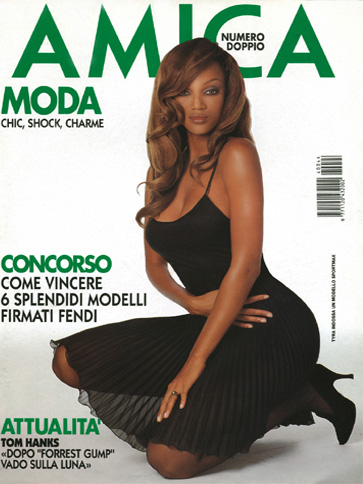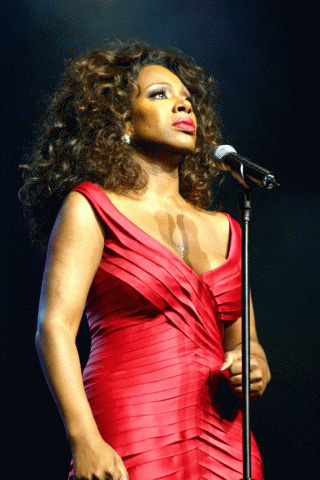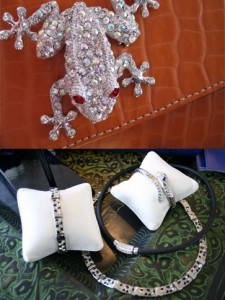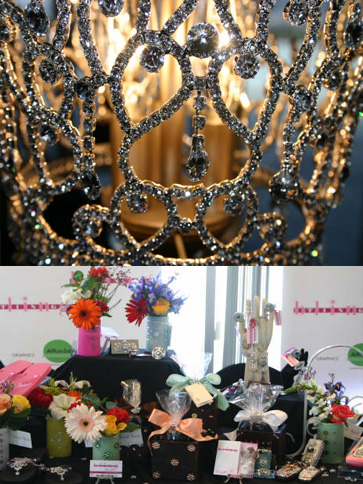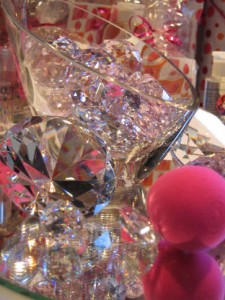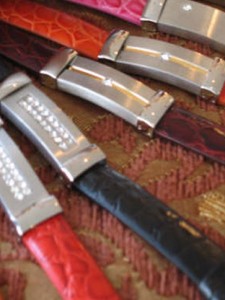Ty-Ron Mayes – Stylist and Fashion Editor with a Super Hero Eye
Some people see New York stylist Ty-Ron Mayes as a triple threat. Not only does he do styling, but he has also mastered make-up and hair. He was in town styling a shoot, and I was able to ask Ty-Ron some key questions.
While Ty-Ron Mayes was in college studying pre-law (he wanted to be a lawyer).
I have a Bachelor of Arts and Sciences in Pre-law/Political Sciences.
Styling was always his hobby, his extra-curricular activity, and it started to become a lucrative business.
Ty-Ron decided to give it a couple of years before he began to immerse himself in another industry. While he was actually doing work in the law field, it started to pull him away from law. That’s when he decided to try fashion for two years.
“I discussed it with my family because they invested a lot of money in me, doing other things. And luckily it took off. I am an opportunist, so I took the opportunity when it arose. I got an internship, and was briefly hired with David Glinert and Associates under Entertainment Law. We handled precedent setting cases at the time, like Martha Walsh and Lolita Hallaway. Their voices were being sampled illegally. Now, as a result, you have to reference anything sampled, and you must pay for it. That was my beginning.”
Ty-Ron was always shooting for his portfolio, and he ended up getting some good layouts on magazines. Always interested in some facet of entertainment, whatever career he decided, it would have to be in entertainment in some way. This explains why he went into entertainment law. If not, then it would have been something else that would lead to his fashion career. And his first break came very soon.
“I had positioned myself to be with Amica Magazine because they were a weekly Italian publication, which gave me 52 chances a year to get published; and because they did 10 stories, it gave me 520 chances to get published. They liked me, but it was that one time I walked in with pictures of Bridget Hall, a 16-year-old super model who had done covers with Italian Vogue. They were astounded that I was able to shoot with her—because they couldn’t even get her themselves. That was my big break, and they ran the story that we shot. I was then asked to come in and do some shoots. Tony Verga of Amica Magazine, the editor at the time, trained me on how to do a fashion layout with all the politics that went behind it. I even shot with Scavullo. Sean Byrnes of Cosmo also took me under his wing. I did Oprah and Iman and it all snowballed at one time.”
There must have been something extra special, a technique that makes you a great stylist.
“I was friendly, people liked me, and helped me because of it. Lisa Lawrence with Moda had been giving me Jean Paul Gaultier for 14 years. What happened was my first love was comic books. I wanted to draw the super heroes, so I was searching my entire life to be able to transfer that love for the comics into the fashion divas that I was working with. I wanted women to look beautiful and heroic. I learned how to do makeup and hair, also; and because of my drawing technique, I was able to pick it up very easily. I learned how to augment the nose along with the little tricks that make celebrities look special. That made my vision of how women could look special. That was my secret weapon.
“It’s more about understanding what’s reality and not reality. Fashion is fantasy—it’s 2-dimensional. So you’re taking a human being who is 3-dimensional, and you have to see them as a 2-dimensional image. It’s almost dehumanizing. When I’m working with models, I’m thinking about the way they’re going to look in the picture. If you know the way the camera was created, whatever is closest to the camera is going to get bigger. A lot of times when I do makeup, I do contouring of the nose, because it’s going to be the closest thing to the camera. So the nose has a tendency to get a little bit wider. So you do some tricks, or see things in 2-dimensional. You’ll highlight the front of the nose and contour the sides because what gets darker falls back and what gets lighter goes front. That’s how you compensate and balance for what the camera is doing, taking a 3-dimensional image and flattening it into a 2-dimensional image. That’s also another reason they like models to be very tall and thin, because they look very normal on the runway. But when you see them in person, you’ll say, ‘’My God she’s 6’1, she didn’t look like that,’ because the camera squashes, flattens, and widens. So if you have a very long body, and it’s photographed, it will photograph like it’s normal. It’s really about understanding the medium that you’re working with.
“There are a lot of tricks, too. Photographers use certain lenses that can slim and elongate the body. They use different lenses that will be for beauty that won’t distort the face. It won’t make it wider or longer. We use a lot of different techniques in order to create an image. I would love for women to know that it is not real. It is definitely for fun—it’s fantasy.
“Then of course there’s retouching—everybody has computers now. No image goes through fashion without being retouched somewhat. Eyes are cleaned up to look whiter. Pupils are made a little bit bigger because they’re considered an erogenous zone, and that means that you’re sexually turned on if your pupils are very wide. So they will sometimes tweak and augment the eyes for magazine covers. There are lots of little tricks that go into making pictures.
“I also wanted to know more than if just the dress is pretty, or if she’s pretty. ‘Pretty’ gets you in the door. It’s all the other techniques that you learn that create the artist, and create someone that people want to work with, and people feel like they’re going to bring something fresh and new and different. The interpretation is going to be different each time. For all artists, you really have to learn your medium. A lot of the new kids that are on the block have no references. You need to have your references so you know what 60s fashion was about. And if you’re going to talk about make-up, what a doe eye is, a smoke eye, and color wash. You know the top and bottom lashes like Liza (Minnelli) and Cher. You really have to have some good references to pull from. This is what’s going to make a fashion picture even more interesting. When people look at a story, it should have some continuity and fluidity. They should be able to look at a fashion layout and see some kind of thin thread that ties all of the images together, and it creates a story and it speaks to you before you even read the title.”
What does Ty-Ron consider to be a trend in 2006?
“On the red carpet I see a lot of clutches from the Hollywood actress with drop down earrings. Platform shoes are more arched, streamlined, and thinner, corked bottoms and wood bottoms. It’s rethought, and shaped into something new. People don’t want to buy something completely old; they want to buy something new with a twist. Celebrities can be a great vehicle for trends, but the designers all have their own individuality—but they also have an ESP. I like to call it the hive mentality, you know, like a beehive. The one queen bee does something, and then all of the other yellow jackets go around and follow her message. So you’ll find that designers will do something and somehow the buzz word gets around. Celebrities have become the new runway stars, and the fashion model has stepped back into her old place. Now people really are celebrity driven. They’re following trends through celebrities. The tabloid magazines have all changed their direction and have gone with the times. And they’re tracking what these celebrities are wearing. You’ll see credits of who’s wearing what, their handbag, shoes, etc. The knock off industry has exploded because we can’t afford the Roberto Cavalli. But you’ll see the day after the Oscars the six hottest dresses duplicated in affordable fabric because people want to look like celebrities now. And now these celebrities look better than ever. They have the perfect haircut, the perfect color. They’re all skinny. They’re all killing themselves dieting so they can actually be on that red carpet. It’s leading to celebrities getting cosmetic, designing, and fashion campaigns. They’re now making their own clothing lines. Instead of blowing up designers on rap records, you’re seeing rappers now talking about their own line. And the kids are going out and they’re buying it, because the celebrity is so powerful.
“It doesn’t come easy. One thing you have to know about the fashion industry, if anyone is going to get involved with it, a lot of it has to do with rejection. It has nothing to do personally with you. A lot of times, you’re just not right for the job, or someone is a friend of someone, and they’re going to get the booking. If you can deal with the rejection and a lot of the near misses, you can have a really good career in the industry. But you really have to know the animal that you’re with. This industry is very fickle. You can be in one day, and out the next.”
Who are some of Ty-Ron’s favorite designers?
“I have designers I gravitate toward for many reasons. Artistically, I like Vivienne Westwood and Alexander McQueen for incredible corseting and interesting beading, and for chic and sexy [there] is Gucci. I always like to bring in somebody new. I am always interested in who’s going to be the next big designer, for instance, Jason Woo, who is a new designer who created the RuPaul doll. I like to book designers who do well and don’t try to make something out of what’s not there.”
Is it hard to be a stylist and not try to make over everyone you meet?
“I learned early on to turn it off, ‘cause if not, you’ll go crazy. You’ll scrutinize everybody that goes past you. I don’t traumatize women by putting them up to an unlivable standard. It’s O. K. to have an eyebrow out of place, or if you want to be experimental with a weird hair color. I like people to be normal. I talk to women all the time about this fashion machine because it can be very abusive to women. Fashion is for children. All of the models that you see walking down the runway that are size 0, 1, and 2 they’re all 15 years old. When they get that dress in the store, it’s going to be cut, reshaped, and lengthened to fit a woman’s body.”
Can you make any woman over?
“I can make a woman look fantastical and beautiful. But I am not a plastic surgeon and cannot move things around. But with tricks we can corset, pad, push up, lift up, and strategically hide things. Everyone, even models, have something that we as stylists hide and something that we really play up on. So if you look at the person’s best asset like maybe a great bust line or great legs, everyone has a little something. You can take that and magnify it, and make that your focal point, and I think that if women learned that little trick, they could take that into their everyday life. And they will feel a lot better about themselves because the real fashion models you see in the magazine don’t really exist. But they each have something special, and remember that we constantly fix and retouch.”
Highest High
“I think that I am enjoying the highs right now. I am in a place where I feel like I learned my craft and I have a lot to offer to my clients. They trust me. It takes a long time to gain people’s trust. It’s a really unfriendly industry to people that are new. A lot rides on a great makeup artist, great stylist, and a fashion model who’s thin, has great skin, and is on time. Millions of dollars are riding on whether or not we are going to produce what we say we can produce. So if I have to say that I am riding on high, right now people can trust my layouts, I have a history behind me. And hopefully I can go further with the career. I am also looking at a book deal.
“I am the fashion editor of a new magazine called Jewel Magazine. I get a chance to do this high-end magazine for people of color. If I can bring all the techniques that I learned on mainstream magazines into this publication, I think I can help change the face of publishing and prove that yes we can sell. One of the biggest injustices in the industry is that they say that blacks and others don’t sell when they put us on their magazine covers. So my task right now is that I want to bring that to the publishing world and show that we can sell.”
Look for Jewel Magazine on the newsstands. For more information about Ty-Ron Mayes visit Warren Tricomi Artist Management at:www.wtmanagement.net.
Interviewed and written by Kaylene Peoples
